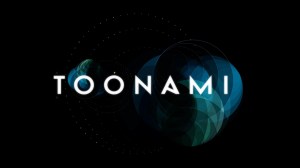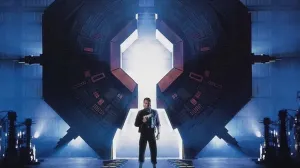There’s no denying that 2020 has been a year of ups and downs for Adam Copeland, better known to WWE fans as Edge. Copeland started the year by making a surprise return to the WWE at the Royal Rumble in Houston and followed that up with two big matches with Randy Orton, one at WrestleMania and a sequel at Backlash. However, during that Backlash match, Copeland suffered a torn tricep that will keep the recently returned WWE star out of the ring for the next several months.
Videos by ComicBook.com
On Friday, ComicBook.com had a chance to speak with Copeland on a number of topics, including his new film Money Plane, as well as his outlook for future film projects (and even which comic book universe he would want to join if given the chance).
Today, in the final installment of our talk with Copeland, we discussed his return to wrestling and what the future holds for him in WWE. But first, we had to start off by asking how his recovery from the torn tricep is going and whether or not he knows what kind of timeline he is on for a return to the ring.
“I don’t know, it was a month yesterday,” Copeland said. “It’s so hard to tell in that initial kind of two months where it’s at and where everything is. I’ve always been happy with the fact that I rebound from injuries pretty quickly. I got back from a torn Achilles in six months which is kind of stupid. But you know I’m also older now so I don’t know what that means. I’ve never had a surgery in my 40s so I don’t know how quick I recover anymore, I guess is what I’m saying. So I don’t know. I honestly don’t know. One thing I have learned is rather than rushing back I need to listen to my body and I need to listen to my body more I think.
“Even with the Backlash match, my arm was sore going into it but I didn’t realize, I didn’t think anything was going on, it was just a little sore. Okay, well that makes sense. When I got the surgery the doctor said there was a pretty good chance it was partially torn going into the match. I didn’t know that, I just thought my elbow is a little sore. But when you’re a wrestler, stuff gets sore, that’s what happens. So I just need to listen more I guess. Back to the point of how long? I don’t know I’m just going to listen to my body and truly listen to my body, make sure I have self care, which I never really paid attention to before. Whether that entails yoga, cold plunges, saunas, whatever that is, I just need to do more of it, especially being 46 now.”

When Copeland is fully recovered, he plans on returning to the ring and continuing the odds-defying comeback that he embarked on earlier this year. Copeland was forced to retire in April 2011 at the age of 37 due to neck injuries. However, Copeland’s neck recovered over the years and he was medically cleared to return to the ring last year. That journey back to the ring was documented in a fantastic edition of the WWE 24 documentary series on the WWE Network earlier this year.
One thing is certain from talking to Copeland: he can’t wait to get back into the ring and has a long list of competitors that he would like work with.
“It’s super exciting. One of the main reasons I wanted to come back is really to try and help a new generation of guys who I can get in there with and have some fun with and hopefully teach too,” he explained. “I was really really fortunate that I was able to get in with the Ric Flairs and the Shawn Michaels and the Undertakers and the Jerry Lawler and the Terry Funks and the Dory Funks and the Tom Prichards. All of these names that helped me, Bad News Brown, Rick Martel, they all helped me. It was their experience that helped me. So when I look at it and I look at this whole new crop of talent, I just think hey maybe I can help some of these guys. That’s super exciting.
“That being said, it had to start with Randy (Orton) because I had to find my comfort level and see where I was at, see if I could still truly pull this off at the level that I wanted. With him as the opponent, I knew, A, he’d be able to test me. But that he’s such a pro. I needed for my own confidence to get in with somebody that I know so well first. So I think we need to see that trilogy through, that needs to happen.
“Then, man, it’s wide open. I’d love to wrestle everybody. If I look at NXT. I look at Finn Balor, I’d love to get in there with him, Damien Priest, Keith Lee, Johnny Gargano, Ciampa, there’s so much talent down there. I’d love to show up at a TakeOver. Then I look at Raw and again there’s just so many talented people so it’s Aleistar Black, it’s Andrade, and Garza, the Viking Raiders, Ricochet, and Cedric (Alexander)…And then I look at Smackdown and I say, okay well Reigns has got to happen and back to Raw, Rollins has got to happen, and then there’s AJ (Styles), then there’s Cesaro and there’s Nakamura, get back in there with Sheamus again, Drew (McIntyre). I mean, it’s really wide open and that’s super exciting. It is a really really exciting thing. I also love the idea of not just the matches but the promos and trying to help some talent discover new layers and new places to go with their character in the context of promos too. That’s all really fun stuff.”

When Copeland returned to the ring at the Royal Rumble in Houston, there were over 40,000 fans present. Fast forward to his next match at WrestleMania 36 in April, and he’s wrestling in front of an empty WWE Performance Center. The same goes for Backlash in June, no fans.
“It is super challenging (wrestling with no crowd). I’d like to say oh yeah, it’s no problem. But it is challenging on so many levels. I think it’s challenging for the announcers. When do we lay out? When do we talk? It’s a different thing that we haven’t had to deal with before. I think now everyone’s kind of finding the pocket of what it is. But initially it was just so unheard of, how do you do this? How do you do it right? How do you do it wrong? I don’t think there is a right or wrong, you just got to start throwing spaghetti at the wall and see what sticks,” Copeland explained.
He continued, “That’s where you get a Boneyard Match. It’s like, that was great. Okay, we can do that. Okay well we’ll have a little bit more forgiveness from the fan base with things that clearly are shot cinematically. It’s a difficult prospect, it really is. I can’t wait until audiences are back. It’s just, honestly it’s so much more fun. As a performer, as a live performer, as a wrestler, you feed off of those reactions. When those reactions aren’t there, it’s still fun, it’s still the dream gig, but that’s what you work for is those reactions. When you don’t hear it it can kind of take you out of it a little bit. It hurts a lot more too (not having adrenaline). You get your natural adrenaline and survival mode but it’s still just not the same as that roar or when you know you’ve got them in the palm of your hand. That’s just such an amazing feeling.
“So I can’t wait for that because the Rumble was just so great and it felt so good. Just hearing and feeling that audience again and in that realm, then you go to silence off of that. The Rumble felt like, all right I made it to the top of Everest, nine and a half years back, that baseball stadium reaction, and then the next match is in front of no one. So it’s strange. But, you have to just make the best and try to pull the positives wherever you can. That’s I think what the industry as a whole has tried to do.”
Copeland’s match with Randy Orton at WrestleMania 36, a “Last Man Standing Match,” was initially supposed to be held at Raymond James Stadium in Tampa in front of over 65,000 fans. Just under three weeks before the show was to take place, WrestleMania had to be moved to the WWE Performance Center in Orlando due to the COVID-19 pandemic. Without fans present, the Edge vs. Orton match had to change in structure considerably. What we ended up getting was a match fought backstage all over the WWE Performance Center, rather than a bout that would have primarily been fought out in front of a screaming crowd at ringside in Tampa.
We asked if it was challenging for he and Orton to have to rework everything they had planned for the match in such a short amount of time.
“It was,” Copeland acknowledged. “You know, I mean you hope your first Mania back in nine years would be in front of an audience but, again, you have to adapt and make do. It’s all you can do. It was also like almost until the hour (of the show) we had to keep changing and adapting because the schedule, there was no fixed schedule. By the time we were actually filming our match it was like, I don’t know, four in the afternoon so it was still sunlight. We had come up with a lot of ideas to go outside and onto the roof and these drone shots and all these things that just weren’t possible because when it was airing during WrestleMania it wouldn’t have coincided (with the time of the show’s airing). So those plans had to get scrapped.
“But we didn’t know, basically, until we were about to film. We’re looking at the matches being filmed and we’re like, okay, is it going to be dark? Is it going to be dark yet? Uh oh, it’s not going to be dark (when they filmed the match). So up until last minute you just have to go okay, well this is what we have on our plate and this is how we have to figure this match out, which can be difficult. You got to be on your toes and be ready. That was WrestleMania this year.”
If you missed it, don’t forget to check out part one of our interview with Adam Copeland where he discusses his role in Money Plane, as well as how filming that role coincided with his training for a return to WWE. You can watch Money Plane on most digital platforms, including Amazon Prime and Apple.
Part two of our interview covered Copeland’s ideal super hero roles and how he almost landed the role of Marvel’s Cable, which you can read at this link.
Media: Please credit ComicBook.com and Ryan Droste when using quotes from this article.








